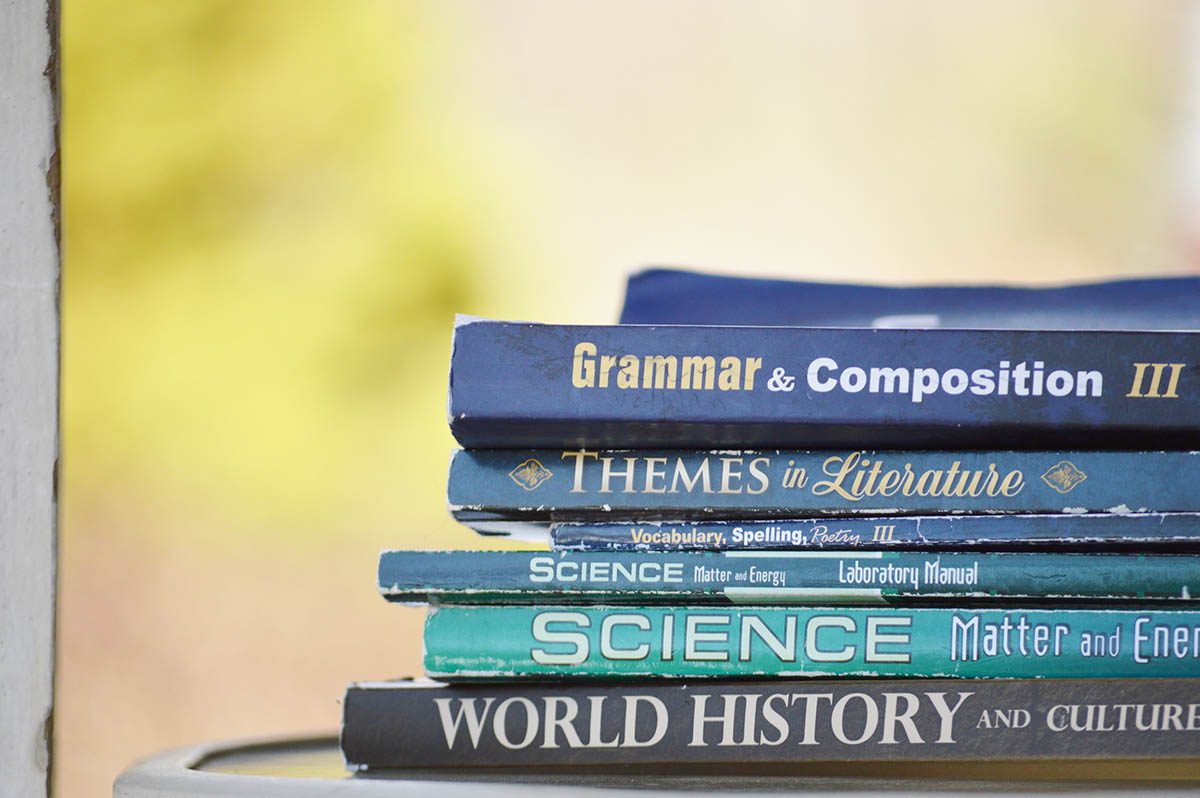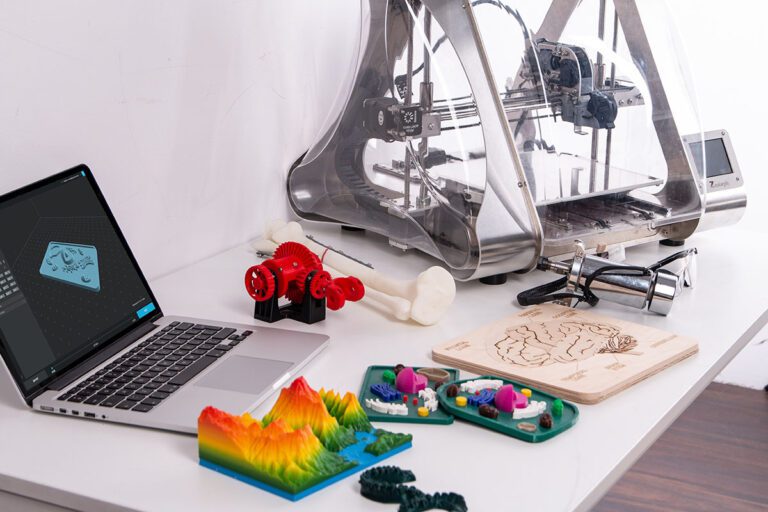We have all heard the term arts integration and probably assumed we know what it means. But do we really understand arts integration as a method of learning? Do we understand how that impacts our practices in the art room? Arts integration is more than just buzzy jargon—it is an approach with defined characteristics based on more than thirty years of research. It differs from other similar-sounding terminologies, such as arts enhancement and art-as-curriculum.
Let’s clarify what arts integration is and is not so we can fully understand the value this approach can bring to your students and art program.
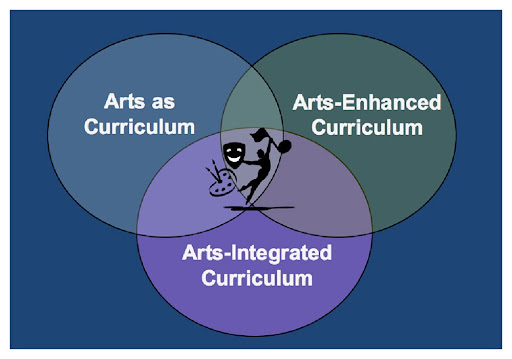
What is arts integration?
A study published in the 2017 International Journal for the Arts by Ludwig, Boyle, and Lindsay defines arts integration “… as a strategy for connecting development of skills and concepts in the arts with skills and concepts from other areas of learning through multiple modes of engagement in classrooms.” The Institute for Arts Integration and STEAM explains that it is “an approach to teaching and learning through which content standards are taught and assessed equitably in and through the arts.”
While there are multiple definitions for arts integration, they all point to the same key indicators:
- Teaches skills and concepts that align to two or more content area standards, with art being one of those areas
- Assesses skills and concepts that align with the standards being taught in two or more content areas, with art being one of those areas
- Holds all content areas and standards to an equal bar
- Fosters collaboration between two or more teachers
- Uses the arts as the vehicle for teaching and learning
Arts integration is a collaborative approach. Before any instruction begins, teachers meet and plan using backward design. You should keep your culminating event, exhibition, or final artwork in mind. Author and educational consultant Jay McTighe explains that this process “… helps to ensure that curriculum plans are well aligned and focused on desired results. Backward design of curriculum helps avoid the twin problems of ‘textbook coverage’ and ‘activity-oriented’ teaching. The decisions made in the collaboration are intentional, meaningful, engaging, and relevant to students.”
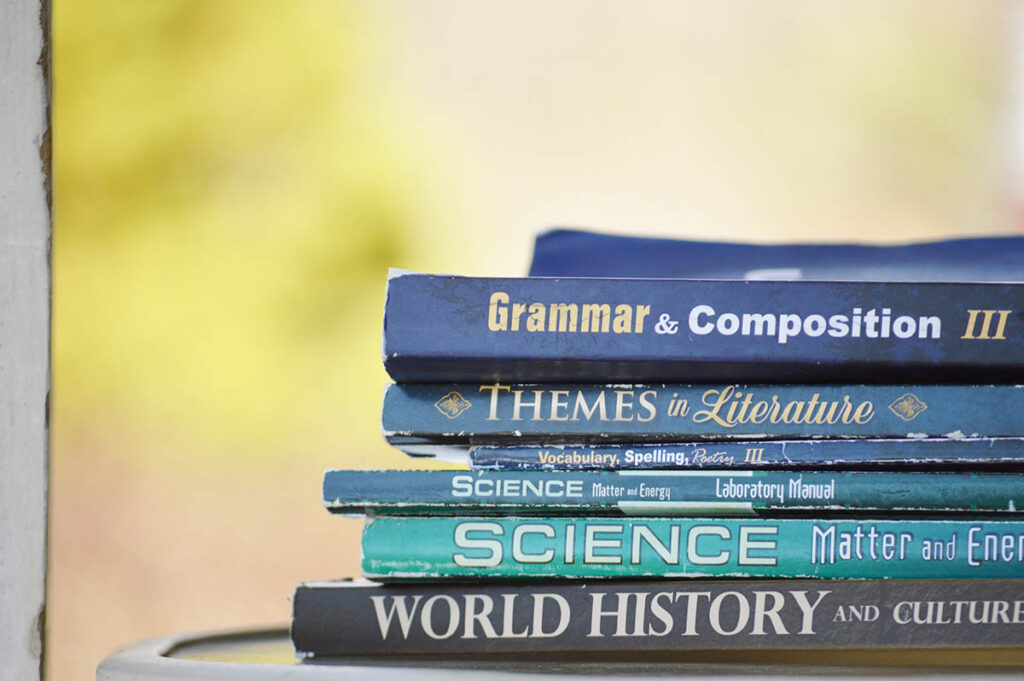
Let’s examine this collaborative approach in action!
Here is a Visual Arts and English Language Arts class partnership. The class learns about storytelling and focuses on character, setting, or event development during ELA. The teacher may ask students to cite their sources by asking them to chart the pages and paragraphs where they learned specific details in a story.
In art class, students apply their ELA knowledge to the creation of a comic strip. Discuss which character inspires them most. Practice visually representing the character, setting, or event with thumbnail drawings as a formative assessment. Students design a comic strip, developing their ideas visually as their understanding of the story’s details deepen.
The culminating product, a finished comic strip, demonstrates the analysis of a character, setting, or event from a text source and the revision process with the thumbnail drawings. Learning will be taught, reinforced, and assessed by two content areas and teachers. Additionally, students can articulate deep and thoughtful reflections about both storytelling and drawing.
This arts integration lesson addresses these two standards:
- CCSS.ELA-LITERACY.RL.4.3 Describe in depth a character, setting, or event in a story or drama, drawing on specific details in the text (e.g., a character’s thoughts, words, or actions).
- 4th VA: Cr3.1.4a Revise artwork in progress on the basis of insights gained through peer discussion.
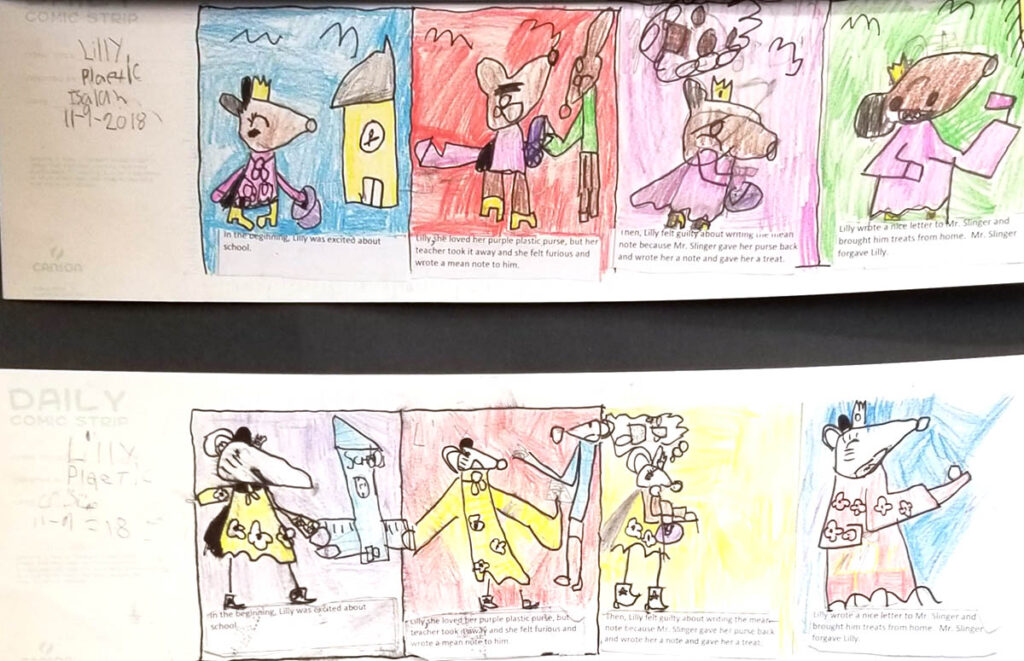
What is NOT arts integration?
Arts enhancement and art-as-curriculum are two other variations of how art can be included in core content areas. There are some similarities with arts integration. However, there are also many differences. Understanding these nuances allows you to confidently speak about the arts to administrators and other content area colleagues.
What is arts enhancement?
In this approach, a core content area or general education teacher reinforces subject-specific learning by including art-based elements throughout the project or in the final product. The core content area or general education teacher does not need to collaborate with you as the art expert because art standards are not taught or assessed. They may consult with you but it is their choice. Arts integration expert Deirdre Moore explains that “… enhancement is where the arts are simply supporting the content area but are not being assessed.”
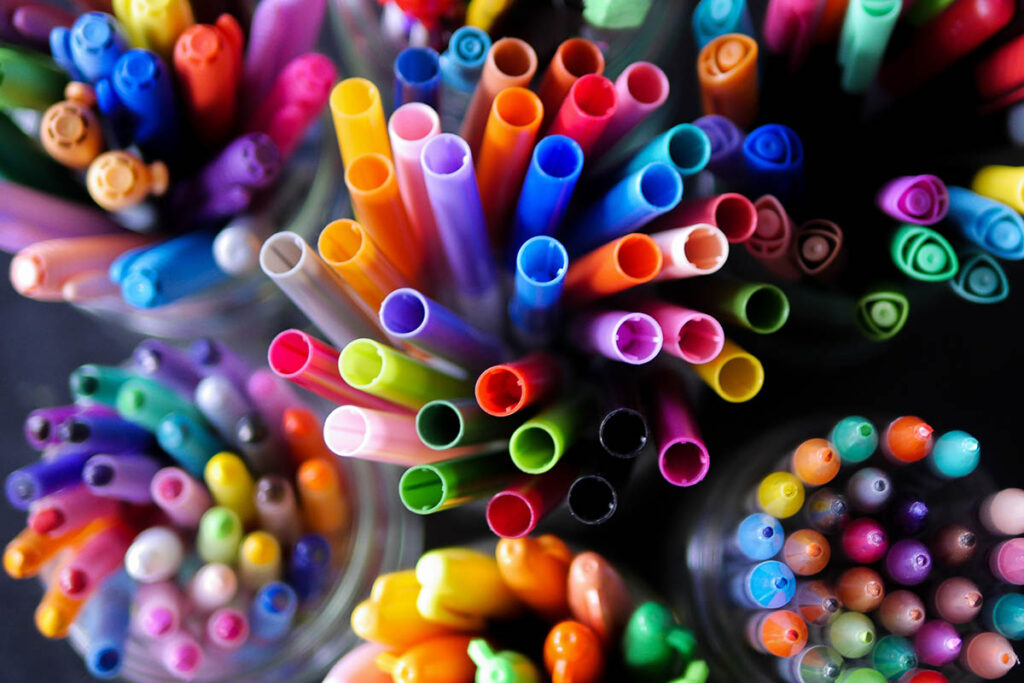
For example, let’s look at a science lesson on atoms. Students illustrate the parts of an atom: the nucleus, electron shell, protons, neutrons, and electrons. This allows students to visually connect and reinforce terms and knowledge. The illustrations will enhance learning in science. However, their drawings will not be assessed with the National Core Arts Standards.
This method of including art activities and expression for the benefit of the core content area is meaningful. Students appreciate art-enriched activities and hands-on experiences in their other classes.
What is art-as-curriculum?
Implementing art-as-curriculum is the model you are probably the most familiar with and do organically. This takes place in your art classrooms! When you plan and execute your lessons, you incorporate many other core content areas. For instance, you include social studies with art history and cultural context, science with the chemistry of various mediums, math with measurements and ratios, and literacy with artist statements. You end up with a well-rounded lesson and curriculum with artwork as the final product. While you may consult other core content area teachers for resources, you do not collaborate with them on the lesson. You won’t teach and assess any standards other than the National Core Arts Standards.
Let’s look at a self-portrait painting lesson. Students write a reflection about the components they selected to represent their identity. While literacy skills are necessary to complete the reflections, you are not teaching English Language Arts. You are also not assessing students using ELA standards. You may choose to check in with an ELA colleague to discuss best practices for scaffolding writing skills or double-check what writing conventions they are used to. In this example, the literacy connection is a supporting element in the creation of an artwork.

How is arts integration beneficial?
Arts integration has many proven benefits for both students and teachers. According to David Gullatt, research shows that “… engagement in the arts has been linked to students’ higher-order thinking and problem-solving skills.” Students retain more information by using a variety of meaningful strategies and multi-sensory ways.
Additional student benefits of arts integration are that it:
- Creates space for student voices and communication
- Allows for multiple entry points into a project where student strengths shine, especially where linguistic abilities diverge
- Reinforces concepts in novel ways as opposed to rote memorization which does not equate to long-term retention of knowledge
- Adds value to the culture of a school because art projects displayed support student ownership
An arts integration model can also support teacher retention and satisfaction. Based on teacher surveys and studies, educators who collaborate and share their expertise feel empowered and valued as an integral part of the community.
Additional teacher benefits of arts integration are that it:
- Builds a stronger professional interest with colleagues
- Encourages teachers to be innovative and learn from each other
- Promotes the discussion of teaching methods
How do I bring arts integration to my school?
Are you interested in bringing arts integration to your school? Consider teaming up with a colleague to lead a pilot program as an arts integration lead teacher! Modeling how collaboration works can be a convincing way to demonstrate the effectiveness of arts integration and welcome others to participate.
Reluctant teachers typically need to observe and understand three things to get on board with arts integration:
- Teachers still work with their skill set, content area, and content standards. They do not need to learn any new material. They are just applying their expertise in a new way.
- Arts integration collaboration does not have to be one more time-consuming thing. Rather, it’s a new lesson planning strategy that reinforces learning in both subjects. Working with a partner can be a deeply enriching experience, build community, and reduce the workload since there is a shared goal and division of labor.
- Support will be provided. You can coach other teachers through a backward lesson design process. You can even co-teach the lesson when it is being implemented.
If signing up for a pilot program is too intimidating, try starting with conducting a professional development workshop during an in-service day or faculty meeting. If your school’s budget allows, you can also invite an arts integration specialist to lead a workshop. Demystifying the arts integration model may spark your colleagues’ interest. There is nothing like witnessing a collaboration to show the myriad of ways arts integration increases engagement between students and colleagues alike.
Now that your curiosity is piqued, check out the following resources for a deeper dive into arts integration:
- When You Want to Try Arts Integration (Ep. 161)
- 5 Things to Know About Arts Integration
- An In-Depth Look at the Power of Art Integration
How is arts enhancement implemented at your school?
Have you participated in an arts integration model through your program?
What is your favorite arts integration lesson that you have done?
Magazine articles and podcasts are opinions of professional education contributors and do not necessarily represent the position of the Art of Education University (AOEU) or its academic offerings. Contributors use terms in the way they are most often talked about in the scope of their educational experiences.
